|
When I was writing a report about the painting of murals at Chiang Mai – Chom Thong underpass, there was an opening ceremony to give
an award to the first and most beautiful underpass in Thailand. It could be said that this is the most beautiful painting of its kind in the world. This is the creation from a
team of artists led by Udom Wanjing, an award-winning independent artist and a guest lecturer in many universities in Chiang Mai.
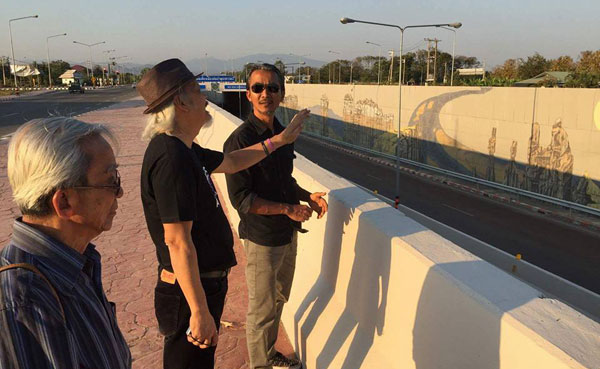
In 2003, he exhibited his works in at Salle Nougaro (Airbus) in Tulus, France. A year later he brought traditional Thai painting
to an exhibit at The Royal University College of Fine Arts, Stockholm. In 2015, and again in 2016, he visited India, and
sketched his impressions, oil pastel on cotton. He also works with charcoal on canvas.
I had known and tried to follow his project “Light of Maneechan” from 2006 - 2014: exterior mural works around the main
building of Wat Maneechan temple. This was actually a duo collaboration between Udom and his wife Atsavinee Wanjing, an
associate professor of the faculty of Fine Arts Chiang Mai university. Maneechan Temple is an old temple in Phutthaisong
District, Buri Ram Province. It is the first creation of its kind that use colorful stained glass in the murals instead of painting.
However, I was excited to present his other project in Mae Wang - Chom Thong underpass in Chiang Mai. It was just completed,
the pilot project from a famous Thai artist who is concerned about the environment of Chiang Mai and in the North of Thailand.
Here is the interview.
JY: Please tell us about yourself?
UW: I was born in Sena District, Phra Nakhon Si Ayutthaya Province in the central region of Thailand. My father is a
craftsman and my mother is a farmer. In my childhood, my father had to move to work in Rayong Province and Chantaburi Province in the East of Thailand. My uncle is also a famous
craftman in temple construction. His name is Kru Jam Lekpong who sculpted in the style of the late Ayutthaya Dynasty. I went
to study Art at Silpakorn University because I love drawing, painting and sculpting. I also love traveling to the forests. One of
my close friends who shared the same passion is assistant professor Wuttigorn Kongka. He is a famous artist, commentator, columnist and a model. We also used to have a
Rock band together. Most songs we liked to play were from Guns N' Roses.
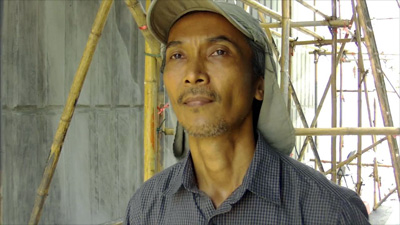
JY: What about awards and scholarship you received?
UW: During my third year in Silpakorn University, I and five classmates got the Narisara Nuwattiwongse scholarship from
the Australian Consulate to study in Australia. I also won many awards from the art competitions from Kasikorn Bank (paintings
and realistic art), Bangkok Bank (Bualuang) and from the Thai army.
JY: Tell us about the project to decorate the underpass in Mae Wang District?
UW: During the middle of 2016, I was contacted by the director of the Department of Rural Roads 10 (DRR), Chiang Mai
Province to paint murals at the Chiang Mai – Chom Thong underpass — to be exceptional and more beautiful like the ones
in foreign countries. For about two months, I spent time searching for information, drafting a drawing plan and correcting until it was completed by me and then approved by
DRR before commencing a drawing process on the site.
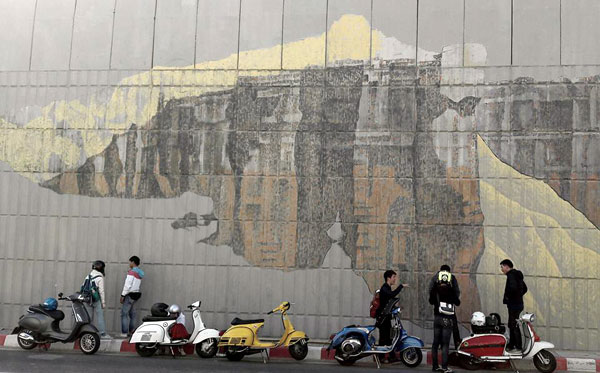
The content of the picture is the story of nature and living things such as insects, animals, plants and natural ponds on Inthanon
Mountain in Chiang Mai Province. The ecological system is so diverse with common and rare plants and animals. This
mountain is alsothe riverhead of the Ping River, one of the four main rivers that flow southwards to the Chao Phraya River, the largest river in Thailand.

For the design, I attempted to use shapes and lines to draw living things in the forest ecosystem to create continuous
elements of content. To start, seeds, fruits and leaves fall to the ground. This helps to set the atmosphere of people wandering in
the forest and encountering wildlife such as insects, birds and animals as well as mushrooms and plants. It makes the people
sizes considerably smaller than animals and plants. In the painting, I also elected to draw lines of vines from the ground to
big trees where there are the habitats of birds and some kinds of insects. The picture leads to the giant fern, a large waterfall cliff
and lastly to Kalanchoe trees on the hill top. At the opposite side of the underpass, there is a painting of very beautiful unfamiliar
land that is made of nature and time, through the river and beautifully carved stone cliff. It is the land that once flourished
called, “Phissadan Nakorn” (Marvelous City).

The wall length is 800m and the average height is 6.50m. Total work duration is 120 days. Including me, there are three
painters and two scaffold makers. To be honest, it is one of the hardest and mind challenging jobs because we have to work
under heat during the day as well as loud noise and smoke from commuting vehicles. Another difficulty is that the painting
surface is not smooth throughout its length. I prefer to use the natural grey color from the concrete wall as the background
color and then create main components of the painting by sketching with black lines before filling suitable colors in various
sections of the painting. My emphasis and point of interest stresses that both our paintings should not distract the vision of vehicle drivers.
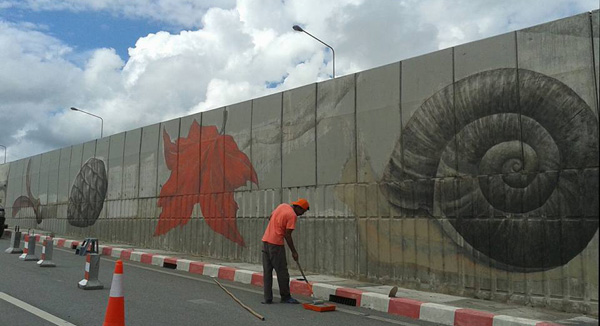
After overcoming all obstacles and the project was successfully approved, my team and I gained more experience from this job
especially how to paint in very large areas with a brush attached to a six-meter long bamboo pole on the iron staircase. Initially, It
was really hard to control the drawing weight and shape. But when we were accustomed to the painting equipment, it was a
great sensation of fondness and charm in the brush strokes that were so new and different from the way we used to paint.
JY: What is your opinion about the climate problem in Thailand
UW: At present, forests in Thailand are continuously invaded by the exploitation of greedy capitalists and some local people in
those areas. This greatly affects weather patterns in the North of Thailand. Over the past 17 years, since I settled down in Chiang
Mai with my family, I clearly saw some changes in the climate during the rainy season — that the amount of rain is less than in
the past and water levels in reservoirs and dams are decreasing shockingly. In some years, there is insufficient water for
agriculture so farmers in some areas are severely restricted. Winter comes quite late and is considerably shorter than the
past. This consistently increases the average temperature of the area. In addition, in recent years, smog covers the majority area
of Chiang Mai city and the North of Thailand due to forest fires. The overall health of people in the area is worsening. The root
causes are arson and slash and burn practices as well as exploitation without conscience. These contribute to the pollution and global warming problems that affect all mankind,
animals, and plants as we have to mostly rely on nature. My only wish is to make people realize the significance of nature which
acts like a great mother who gives birth to all living beings in this world.
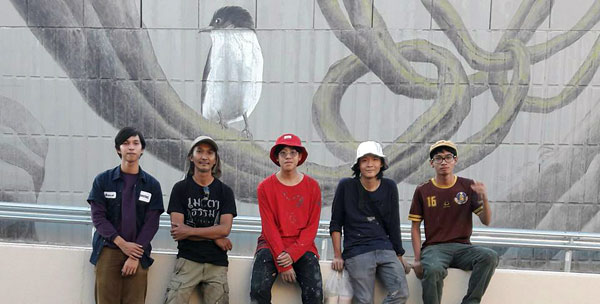
|